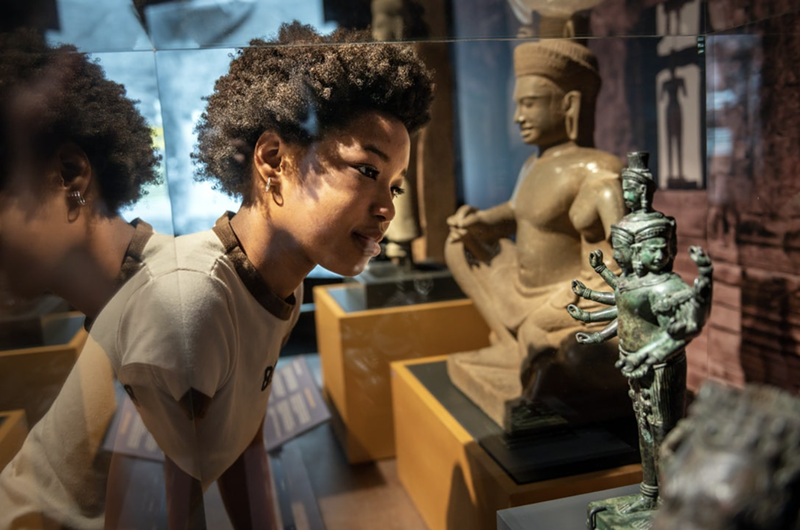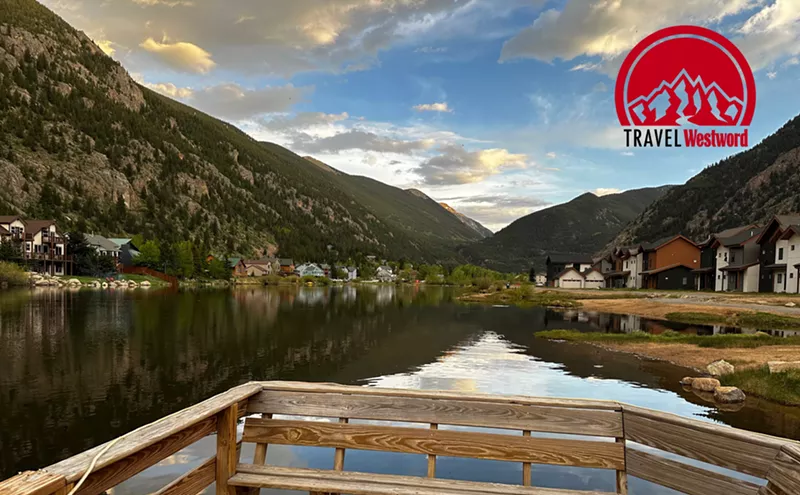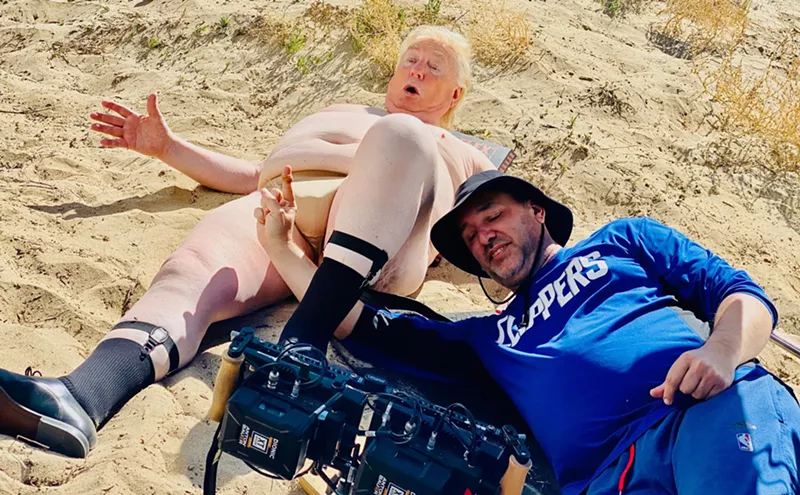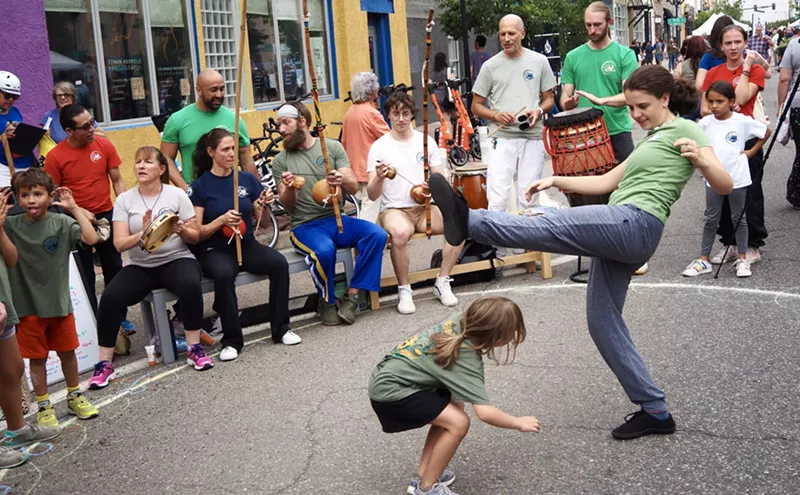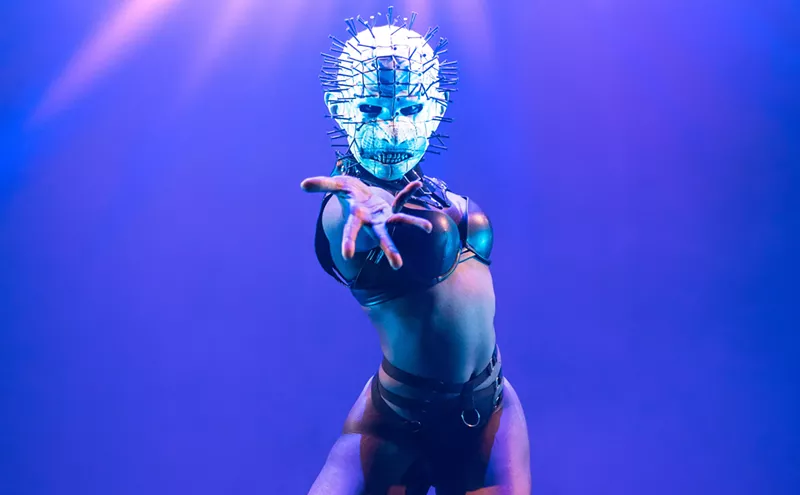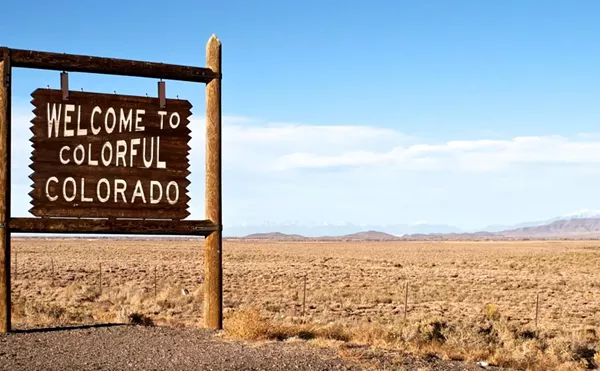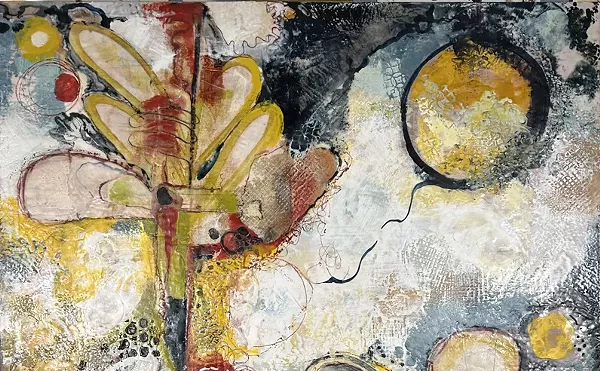Fortunately, the Denver Museum of Nature & Science is offering a considerably more convenient — not to mention cheaper — way to soak in some of Khmer (pronounced "khmai") kingdom's spectacular cultural heritage. The museum's newest temporary exhibition, Angkor: The Lost Empire of Cambodia, includes more than a hundred pieces of statuary, intricate carvings and sacred relics, many of which have never been displayed outside the country.
Built in the twelfth century and originally dedicated to the Hindu god Vishnu, Angkor Wat became a Buddhist temple by the end of the thirteenth century. At its pinnacle, the surrounding city was home to 750,000 people and covered 400 square miles.
"There's a really showstopping piece that was actually from a temple called Prasat Chen north of Angkor," says Julie Peterson, experience developer for DMNS. "Originally, there was a grouping of nine sculptures in this temple, and over the course of the Khmer Rouge regime and the Cambodian Civil War in the 1960s and 1970s, all nine of those sculptures were looted and distributed all around the world. In the last couple of decades, the Cambodian government and international scholars have worked really closely to begin repatriating objects that have been looted across the centuries. And this is one of those objects that was returned to Cambodia. It's amazing that we have this opportunity to see something so rare and so rich with culture and history. That's a really incredible piece."
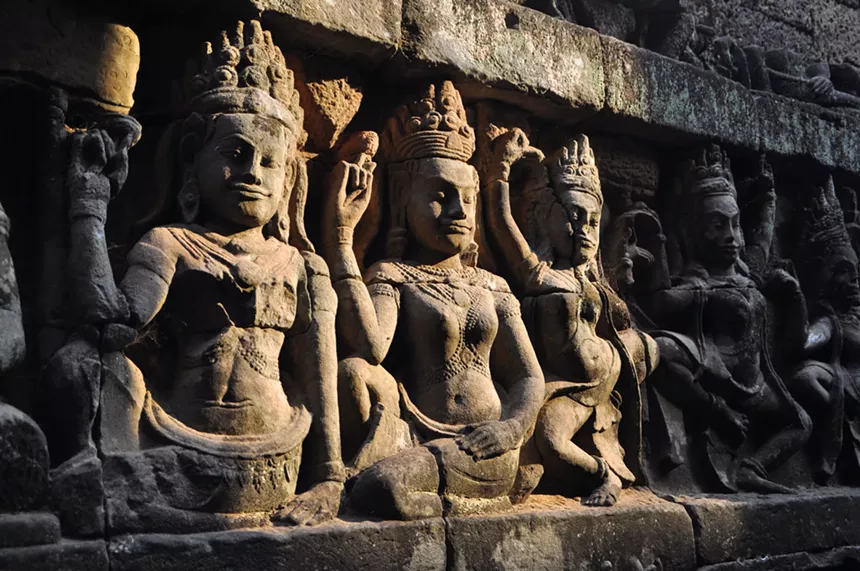
These relief statues of goddesses holding fans are part of the sculpture work at the terrace of the Leper King, located in Angkor Thom.
Antony Holvoet
The exhibit also includes an interactive element based on LIDAR technology, a remote sensing technology. "It uses lasers to be able to see through the dense vegetation of the jungle and reveal what's on the ground," Peterson explains. "Cambodian archaeologists and international scholars working there have learned so much more about the ancient empire."
Blessing ceremonies were held before the February 21 opening, with members of the local Cambodian community joining Buddhist monks to welcome the exhibition. Tony Oum's parents fled Cambodia in the 1980s, settling in Longmont, where he was born; the University of Colorado Boulder grad is now executive vice president of 1st Bank's multicultural banking center. "I think it's really cool to see a piece of our cultural heritage be represented here in Colorado," Oum says. "I think most people know of Chinese, Vietnamese and some other [Asian] communities, but not many people know of Cambodia. So this really showcasing our culture and having other communities be part of ours as well. Cambodia has been around thousands of years, and the Khmer Empire predates a lot of these current-day countries.
"I think that the other important piece is kind of to see how two religions merge together," he continues. "Before Cambodia became Buddhist, we were Hindus. Then when one of the kings took power and decided to change from Hinduism to Buddhism, he kept a lot of the Hinduism identity and merged the two of them. So a lot of stuff that occurs in Cambodian culture is rooted in Hinduism, but we practice Buddhism. I think it just showcased that you can put two religions together without fighting or going to war. That is that's something we could all learn from today."
Angkor: The Lost Empire of Cambodia runs through August at the Denver Museum of Nature & Science, 2001 Colorado Boulevard; the exhibit is free with museum admission (tickets to the accompanying film at the Infinity Theater are $10 or less). The museum is open from 9 a.m. to 5 p.m. daily and most Fridays until 9 p.m.; visit dmns.org for more information.

